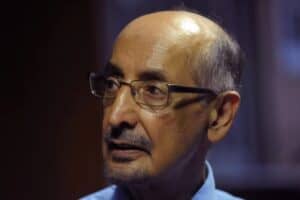Her endorsement of necklacings in 1986 offers more insight into her and the ANC than many of the glossy eulogies may allude to.

In the avalanche of words that have followed the unsettling of South Africa’s political snow by Winnie Madikizela-Mandela’s death, I noticed that very few of those who have written in tribute of her have lingered long on, or even mentioned, her vigilantism.
They have also skirted around or avoided some of the other things about her that wouldn’t look good on a Hallmark card in the ongoing process of sanctification that has been going on since last week.
But in so doing we run the risk of misremembering her and why she became who she was. We are inadvertently evading the opportunity to place her in her true historical context, which was that she spent most of her young adult life being chewed in the bloody maw of the apartheid state machine, and that this well-meaning social worker was changed by that.
The result was that she became angry – very angry. And I get why. I would have become angry too.
When she stood in front of that crowd near Krugersdorp in 1986 to infamously say “together, hand in hand, with our boxes of matches and our necklaces we shall liberate this country” she became more than just the mother of the nation, she donned the mantle of vigilantism.
She went from being more than just a Mama, the giver of life, to becoming a Kali, the destroyer.
Necklacing is a particularly brutal way to be murdered. Just the thought of it sends shivers. As the tyre is forced around your beaten body, there must be that terrible feeling of being trapped as the smell of petrol engulfs you, as the splashing liquid stings your skin and eyes, and the unbearable heat then consumes you. It’s not a quick death either. It can take up to 20 minutes before the agony ends.
This is a style of vigilante killing intended to not only humiliate and reduce the victim to ash, it’s also a very public form of punishment. The people around you will not be able to drag their eyes from the spectacle, while the black smoke billowing upwards from your charred remains will serve as a signal and a warning that can be seen for miles around.
That was partly what the necklacings of the 1980s were meant to achieve: to be a deterrent to other suspected police informers, to encourage them to have second thoughts about collaborating with the regime.
Because, make no mistake about it, there were a lot of infiltrators.
Over the weekend, a former apartheid cop claimed that just about every single bodyguard Winnie had was also secretly a police informer. That may have been an exaggeration, but probably not by much.
We don’t know even half the truth of how many “struggle fighters” were double agents playing both sides. Depending on who you speak to in the ANC, many of those same men and women ended up doing very well for themselves after 1994, ascending to some of the highest positions in the land, never being properly exposed for having collaborated with apartheid, for being what the parlance of the time called “askaris” (active double agents) and “impimpis” (mere informers).
When it comes to Winnie, though, no one ever did, or ever could have, accused her of having collaborated with her oppressors in any way. She was uncompromising, an attitude that continued to ensure she had powerful enemies to her dying day.
And you can imagine her justifiable paranoia at being surrounded by so many Judases. During the course of the struggle she was betrayed by friends, family and Lord knows how many others. Aside from herself, the movement as a whole was being sold out and it was nigh impossible for a struggle fighter to brush his teeth with a new brand of toothpaste without Adriaan Vlok hearing about it.
The end result was that the movement was terrorised on a daily basis, left in disarray, demotivation and in distrust of itself. We know that the Security Branch liked to attack in the early hours when households were asleep. After a psychopath like Eugene de Kock kicks down yet another door in a township somewhere at 3am to take yet another Umkhonto weSizwe operative to Vlakplaas to be tortured and/or killed, how do you not get angry about how exactly he knew which door to kick down?
He knew, of course, because some impimpi told him.
And that’s why Winnie simply snapped and said: “Let’s burn them all.”
The problem, of course, with vigilante justice is that it becomes a witch-hunt all too easily. You inevitably end up killing innocent people along with the guilty, and that certainly must have happened many times with much of the necklacing during the bloody 1980s. Some of the blame for the condonation of that violence obviously lies at Winnie’s feet, but I doubt that she was in the mood for such subtlety at the time. Even if the innocent were being burnt along with the collaborators, the bigger message she was no doubt keen on sending was that she’d had it up to here with it all, and it was important to send a message to all the impimpis that there would be consequences for selling out the struggle.
Sadly, this was precisely also one of the things the regime’s intelligence operatives were hoping to achieve by infiltrating the movement: to have the ANC’s freedom fighters turn on each other and kill each other. There are numerous sad stories of how the apartheid government was able to kill innocent MK soldiers in this way, simply by creating confusion and distrust, and without the government having to fire a single bullet itself.
So Winnie – a woman previously brutalised in solitary confinement for nearly a year and a half, followed by years of banishment – was playing into their hands. But I still understand why she did.
For someone like Thabo Mbeki to tell us today that in 1986 he and the then leader of the ANC, Oliver Tambo, were sitting in quiet judgment of Winnie from the relative comfort of exile is, in the first instance, cheap – and it borders on hypocrisy.
We know the ANC in exile had set up many brutal detention camps of its own, to which it sent all those suspected of being informers, and there were many. These men and women were often tortured by the infamous Mbokodo (The Stone that Crushes) and killed in circumstances Tambo must have known about.
So Mbeki should spare us the moralising.
In the end, Nomzamo Winifred Zanyiwe Madikizela-Mandela is not a woman who should be elevated to sainthood. In any case, I have no doubt she would have opposed all the current attempts to install a halo over her head, much as her former husband did too.
Because she was far more than a mere saint. She was a fighter, and for all her flaws she was real. Instead of trying to make out that, like Nelson Mandela, she was supposedly able to rise above the great challenges of her time, we would be better served accepting that she was a genuine product of her context and time.
And by accepting that, we will come to a deeper understanding of just how monstrous those life and times actually were – instead of somehow trying to romanticise it all now.

Citizen digital editor Charles Cilliers






